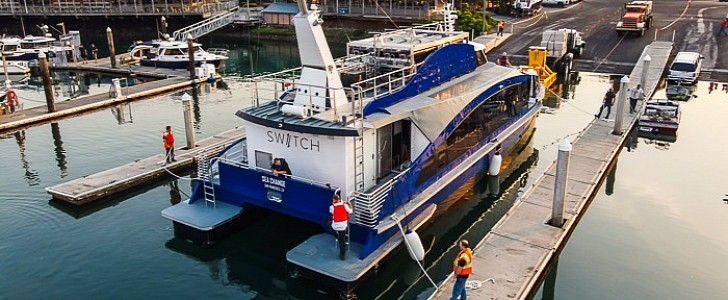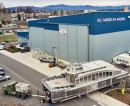Although considered controversial by some, hydrogen fuel cell technology is playing an increasingly important part in our world, being used from powering cars and trucks, to becoming a viable fuel alternative for aircraft and vessels. Things are moving slower when it comes to marine transportation, but important steps, like the launch of this first hydrogen fuel cell vessel, show that it’s making progress.
The first electric-drive ferry in the U.S. that is 100% powered by hydrogen fuel cells is ready to begin operating in the California Bay Area. That’s thanks to a young U.S. maritime investment company called Switch, which is determined to develop America’s first fleet of zero-emission ships.
Together with the All American Marine shipyard, specializing in hybrid-electric vessels, and working closely with the U.S. Coast Guard, Switch has developed the first of its future ships, called Sea Change.
The company announced that Sea Change is beginning operational trials, after its construction was recently completed. This pioneering 70-foot (21.3 meters) ferry was designed to carry 75 passengers, in the California Bay Area.
In terms of power, Zero Emissions Industries equipped it with 360 kW of Cummins fuel cells, and hydrogen storage tanks with a 246 kg (542 lb) capacity. Additionally, BAE Systems provided the two 300 kW electric propulsion systems, connected to a XALT 100 kWh lithium-ion battery. According to Switch, fuel cell systems will enable the same performance and “operational flexibility” as diesel, without impacting the environment and with less maintenance required.
For a more efficient use of space, the onboard fuel cells are placed in compact stacks, the same way as battery racks. The hydrogen storage tanks are connected to the fuel cell powertrain, and the resulting electricity runs the propulsion motors, which then turn the twin fixed-pitch propellers.
For now, the Sea Change e-ferry’s mission is to demonstrate the viability of this propulsion technology. Switch hopes that this will be an important step towards a broader use of hydrogen fuel cell marine technologies in the U.S.
Together with the All American Marine shipyard, specializing in hybrid-electric vessels, and working closely with the U.S. Coast Guard, Switch has developed the first of its future ships, called Sea Change.
The company announced that Sea Change is beginning operational trials, after its construction was recently completed. This pioneering 70-foot (21.3 meters) ferry was designed to carry 75 passengers, in the California Bay Area.
In terms of power, Zero Emissions Industries equipped it with 360 kW of Cummins fuel cells, and hydrogen storage tanks with a 246 kg (542 lb) capacity. Additionally, BAE Systems provided the two 300 kW electric propulsion systems, connected to a XALT 100 kWh lithium-ion battery. According to Switch, fuel cell systems will enable the same performance and “operational flexibility” as diesel, without impacting the environment and with less maintenance required.
For a more efficient use of space, the onboard fuel cells are placed in compact stacks, the same way as battery racks. The hydrogen storage tanks are connected to the fuel cell powertrain, and the resulting electricity runs the propulsion motors, which then turn the twin fixed-pitch propellers.
For now, the Sea Change e-ferry’s mission is to demonstrate the viability of this propulsion technology. Switch hopes that this will be an important step towards a broader use of hydrogen fuel cell marine technologies in the U.S.







